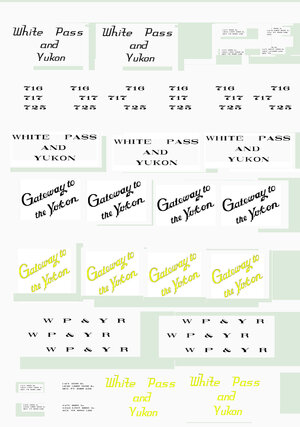Snowman
Well-Known Member
I have the idea it's possible to "spoof" an inkjet printer (the ink tank type, or one which uses refillable cartridges), into printing solid white ink while the printer-and-software combination actually thinks it's printing solid black ink in grey-scale printing mode. I was contemplating this a while back, and did some research, but I can't remember what I came up with because in larger volumes, ink-pad printing seemed like the better alternative for big fleets of cars. Or for printing "runs" of cars as might a manufacturer.
The big issue with white ink is keeping the ink head clean, but it's certainly possible with special white-inkjet printers and their inks. I WOULDN'T want to try it using that expensive Epson, but if you have an old small printer lying around you might try it. Maybe using something as simple as the classic "white out" typing ink (thinned way down, of course). Or maybe ink pad printer inks.
Or just stick with the dry-transfers.
The big issue with white ink is keeping the ink head clean, but it's certainly possible with special white-inkjet printers and their inks. I WOULDN'T want to try it using that expensive Epson, but if you have an old small printer lying around you might try it. Maybe using something as simple as the classic "white out" typing ink (thinned way down, of course). Or maybe ink pad printer inks.
Or just stick with the dry-transfers.



